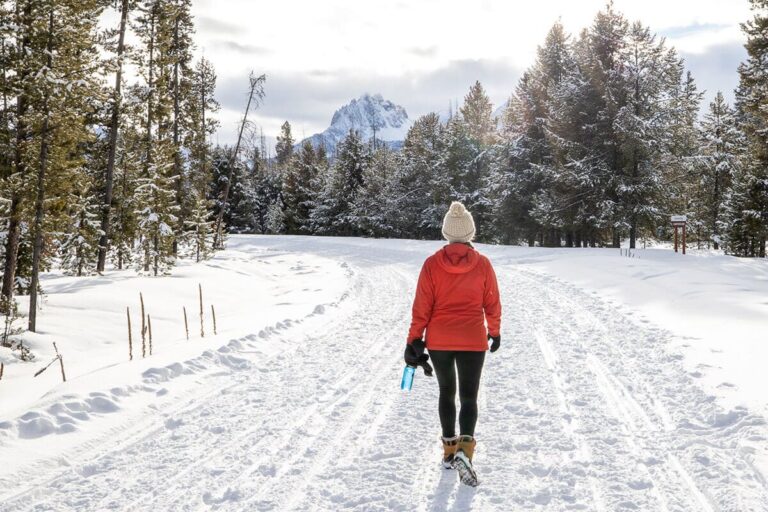Wear thermal or moisture-wicking base layers under ski pants to stay warm and dry while skiing. One essential aspect of skiing is staying warm and comfortable on the slopes.
To achieve this, it is crucial to layer up appropriately, starting with the base layer under your ski pants. The base layer serves as insulation, trapping heat close to your body while wicking away moisture to keep you dry. Thermal or moisture-wicking materials such as synthetic fabrics or merino wool are ideal choices for base layers.
These fabrics effectively regulate body temperature and prevent sweat from accumulating. By investing in the right base layers, you can ensure a comfortable and enjoyable skiing experience in any weather conditions.
Base Layer Options
When it comes to choosing the right fabric for base layers to wear under ski pants, there are two main options to consider: synthetic materials for moisture wicking and merino wool for natural insulation.
Synthetic materials, such as polyester, are popular for their ability to wick away moisture from the skin. This helps to keep you dry and comfortable during physical activity. Synthetic base layers are typically lightweight, breathable, and quick-drying, making them a great choice for skiing or snowboarding.
On the other hand, merino wool is a natural fiber that provides excellent insulation and temperature regulation. It has the ability to keep you warm in cold weather and cool in warm weather. Merino wool base layers are known for their softness, odor resistance, and moisture-wicking properties. They are also naturally sustainable and biodegradable.
Ultimately, the choice between synthetic materials and merino wool comes down to personal preference and specific needs. Some people may prefer the performance benefits of synthetic materials, while others may prefer the natural properties of merino wool. Regardless of the choice, both options can provide comfort and enhance your skiing experience.
Insulating Layer Choices
When it comes to choosing the right insulating layer to wear under your ski pants, there are several options available. One popular choice is fleece, which offers lightweight warmth and is great for active outdoor activities. Fleece is known for its excellent insulation properties, trapping heat close to the body while remaining breathable and moisture-wicking. Another option to consider is down jackets, which provide superior heat retention in colder conditions. Down is highly compressible, making it easy to pack and carry, and it offers excellent warmth-to-weight ratio. Lastly, you may want to explore the option of Primaloft insulated clothing. Primaloft is a synthetic insulation technology that offers versatile performance in various weather conditions. It provides excellent warmth, even when wet, and is lightweight and breathable. In conclusion, whether you choose fleece, down jackets, or Primaloft insulated clothing, each option offers its own benefits and can keep you warm and comfortable while hitting the slopes.
Bottom Layer Essentials
htmlBottom Layer Essentials
When gearing up for a day on the slopes, choosing the right clothing to wear under your ski pants is crucial for comfort and performance. Here are some essential bottom layer options that will keep you warm, dry, and ready to tackle any winter adventure:
| Thermal Leggings for Added Insulation |
|---|
| Thermal leggings are the foundation of your ski outfit. They provide an extra layer of insulation to keep your legs warm in freezing temperatures. Look for leggings made from moisture-wicking and quick-drying materials, such as merino wool or synthetic fabrics. These fabrics will help regulate your body temperature and keep you dry, even when you’re sweating. |
| Softshell Pants for Breathability and Comfort |
| For a more versatile option, consider wearing softshell pants as your base layer. Softshell pants are designed to be breathable, windproof, and water-resistant, making them ideal for active outdoor activities like skiing. They offer a good balance between insulation and breathability, keeping you comfortable throughout the day. |
| Ski-Specific Base Layers for Maximum Performance |
| If you’re looking for optimal performance on the slopes, investing in ski-specific base layers is worth considering. These base layers are designed with specialized features like compression panels, strategically placed ventilation zones, and moisture-wicking properties. They are tailored to meet the demands of skiing, providing enhanced mobility, support, and temperature regulation. |

Credit: www.igluski.com
Frequently Asked Questions Of What To Wear Under Ski Pants
What Should I Wear Under My Ski Pants?
Wear moisture-wicking base layers made from synthetic materials like polyester or merino wool. Avoid cotton as it retains moisture, making you feel cold. Layer up with thermal leggings or long underwear for added warmth. Don’t forget to wear proper ski socks and avoid wearing too many layers.
Are Thermal Leggings Necessary Under Ski Pants?
Thermal leggings are highly recommended to wear under ski pants. They provide an extra layer of insulation, keeping you warm during cold skiing sessions. Thermal leggings also offer moisture-wicking properties, helping to keep you dry and comfortable throughout your day on the slopes.
Can I Wear Jeans Under My Ski Pants?
It’s not recommended to wear jeans under ski pants. Jeans are made from cotton and retain moisture, making you feel cold and uncomfortable. Opt for moisture-wicking base layers like thermal leggings or long underwear instead, as they provide better insulation and moisture management during skiing activities.
Conclusion
To sum up, choosing the right clothing to wear under ski pants is crucial for a comfortable and enjoyable skiing experience. From moisture-wicking base layers to insulating mid-layers, and even the right socks, each piece plays a vital role in keeping you warm, dry, and insulated on the slopes.
By following these tips and considering your personal preferences, you can ensure that you’re dressed appropriately for your next skiing adventure. Embrace the thrill of the slopes, knowing that you’ll be protected and ready to conquer the mountain. Happy skiing!





